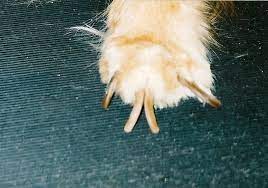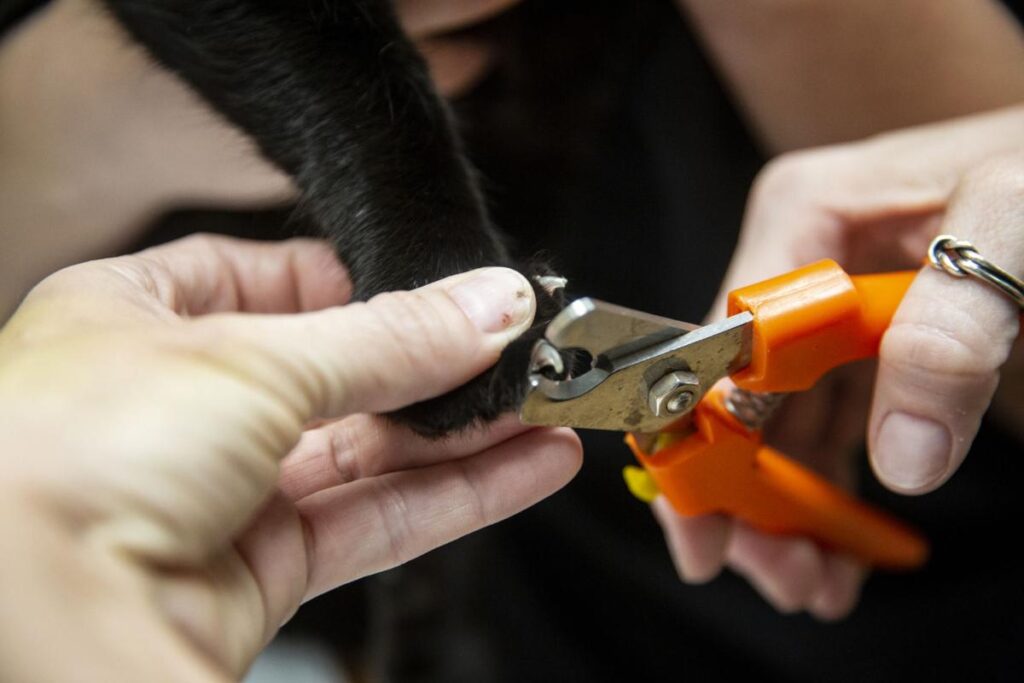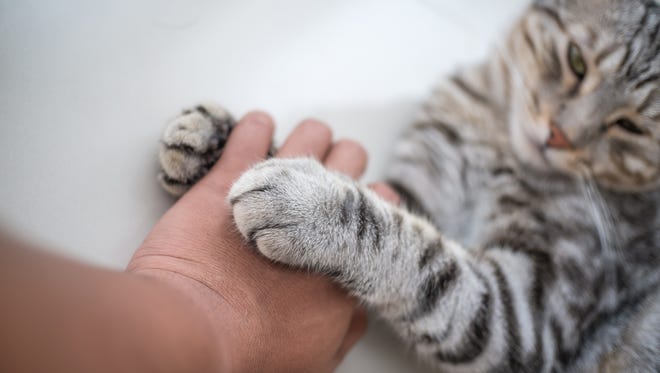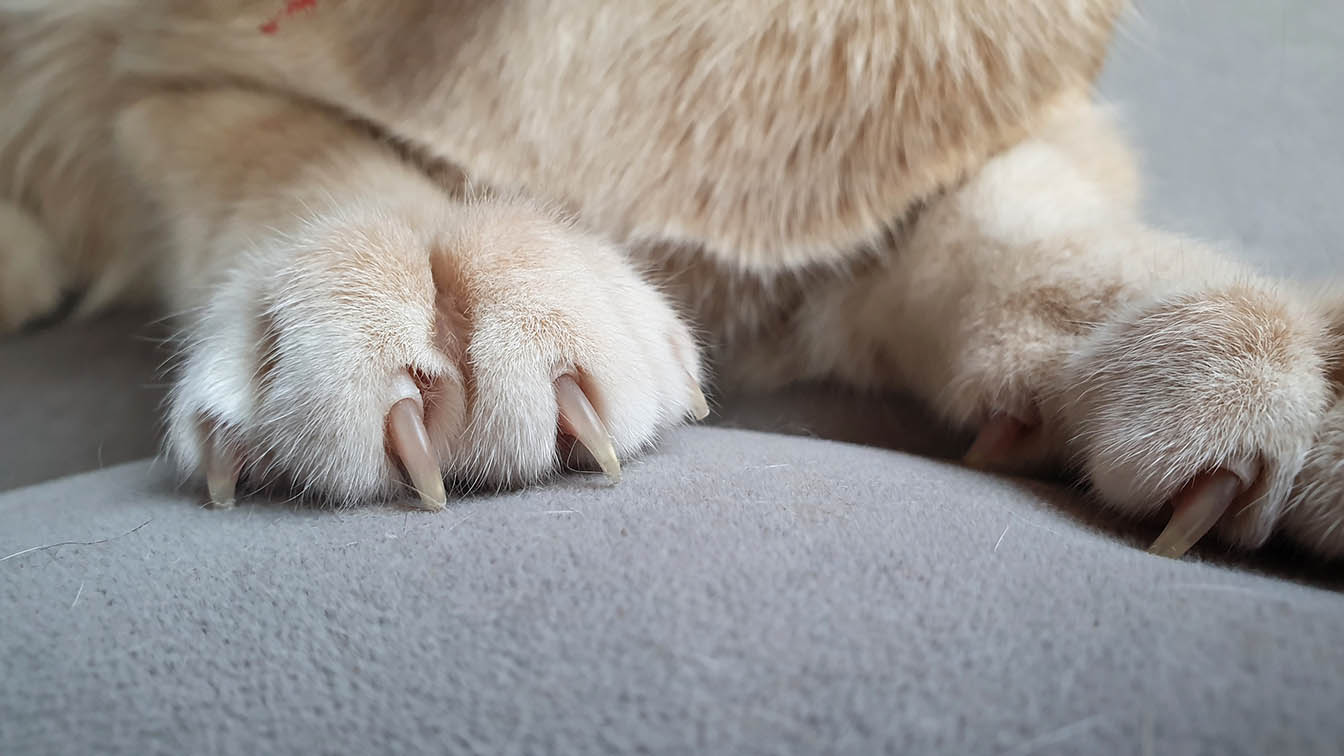There is a reason why they say as playful as a kitten – cats can be quite a handful as they jump and play both around and outside the house.
While this play and fun can be entertaining and exhilarating, it also exposes them to potential injuries like bent claws.
If your cat’s claw is bent sideways, it could be due to several different reasons.
For example, the claw could be broken or fractured. Alternatively, your cat may have sprained its toe or simply be in the process of shedding its claw.
If the latter is the case, you should be able to gently remove the hanging nail with your fingers or clip it off with a nail clipper.
However, if the claw is broken or fractured, you will need to seek veterinary treatment.
In either case, it’s best to keep an eye on your cat and observe any changes in their behavior or appearance.
Let us have a look at the reasons for bent cat claws in more detail below.
Reasons for Cat Claw Bending Sideways

1. Broken Toenail
A broken toenail is a relatively common injury in cats. It can occur when your cat catches its toe on something or if its nail is caught in a door or other piece of furniture.
In most cases, the nail will simply break off at the point where it was bent.
However, if the break is severe, it may cause the nail to bend sideways.
In most cases, you can clip the broken nail but if the injury is severe, a visit to the vet might be necessary.
Related Post: Cat Dew Claw Injury: A Quick Guide for New Cat Owners
2. Sprained Toe
A sprained toe is another common injury in cats. It occurs when the ligaments and muscles around the toe are stretched or torn.
This can happen if your cat catches its toe on something or if it falls from a height. In most cases, the toe will swell and may turn black and blue.
If the sprain is severe, the toe may bend sideways. If this happens, you will need to take your cat to the vet so that they can assess any further damage as well as recommend the best treatment.
3. Shedding Claw
Cats shed their claws regularly as part of their natural grooming process.
During this time, the nail may become loose and bend sideways.
In most cases, you will be able to gently remove the hanging nail with your fingers or clip it off with a nail clipper.
The cat might also remove the shed claw on her own if you just let it be.
Related Post: The ABCs of Cat Claws Shedding
4. Fracture
A fracture is a break in the bone. It can occur if your cat falls from a height or if its nail is caught in a door or other piece of furniture and breaks.
If the fracture is severe, the toe may bend sideways.
If this happens, your cat will most likely be in pain and you might notice a limp in her walk.
Your cat might also display other signs of sickness like excessive sleep and lethargy.
If you suspect a fracture is the cause of the bent claw, take your cat to the vet immediately to avoid making the problem worse.
Should I Take My Cat To The Vet For A Bent Claw?

The answer depends on the severity of the issue. If the claw is completely detached, or if the bone is visible, then it’s important to seek professional medical attention immediately.
However, if there is no exposed bone, you can easily manage it at home.
Start by trimming any ragged edges of the nail using a sharp pair of cat nail clippers.
Trimming a cat’s nails can be a challenge, especially if the cat is unwilling to cooperate. This is why cat parents should start trimming the nails when the cats are still kittens – this way, they will get used to the process.
It’s important to handle your cat gently and patiently so that they don’t become anxious or scared.
Once your cat is comfortable with you handling their paws, you can start trimming their nails.
It’s best to use sharp nail trimmers made specifically for cats, and you should only trim a small amount of the nail at a time.
Be careful not to cut into the quick, which is the pink part of the nail where blood vessels and nerves are located.
If you do accidentally cut into the quick, apply some styptic powder or cornstarch to stop the bleeding.
With patience and practice, you’ll be able to trim your cat’s nails without any trouble.
After trimming, wrap the claw in gauze or vetting tape and keep an eye on it for infection.
If the injury doesn’t seem to be healing after a few days, or if your cat seems to be in pain, then it’s time to take them to see the vet.
You may also want to check if the toe is swollen and is sensitive to touch because that would indicate a more severe injury.
In such a case, your feline friend may have difficulties in walking and will need medical attention.
Additionally, as tempting as it might be to give your cat some painkillers, Dr. Lindsey, D.V.M, advises against administering over-the-counter drugs to your cat.
If your cat is in visible pain, take her to the vet and they will prescribe the best medication after examining your cat.
Do Broken Cat Claws Grow Back?

Cat claws are not actually attached to the bone. Instead, they are attached to the fleshy part of the toe by a tough ligament.
This allows cats to extend and retract their claws at will. It also means that if a cat breaks a claw, it will eventually grow back.
However, the process can take several weeks, and the new claw may not be as strong as the old one.
In the meantime, it is important to keep an eye on your cat’s broken claw and make sure that it does not become infected.
Closing Thoughts
Cats are prone to injuries, especially when they go outdoors.
If you notice that your cat has a bent claw, it’s important to take a closer look and see if the bone is exposed.
If it is, then you will need to take your cat to the vet so that they can assess any further damage and treat them accordingly.
However, if the claw is only bent and there is no bone exposure, there is a good chance it is just a broken nail and you can manage it at home.
However, if your cat is in pain, e.g. if she is walking with a limp, take them to the vet immediately.

Hi! I am Eleanor Price. I started this website after my cat, Louie, almost died from a case of botulism (a type of food poisoning often caused by bacteria that grow on food items). Turned out that my cat’s diet was the problem. I have made it my duty to provide the best information and recommendations about everything cat lovers need to know about their felines’ health and wellbeing. My goal is to find the most informative content on anything feline-related and share it with fellow hardworking kitty lovers.

